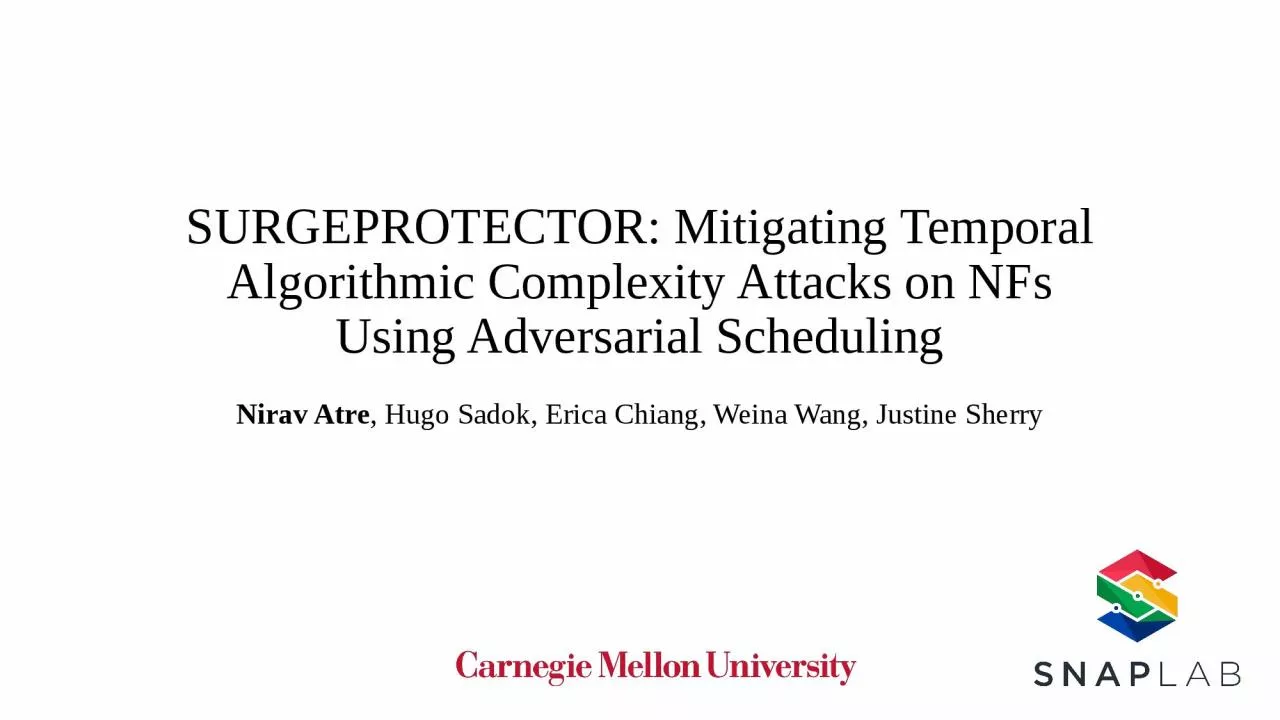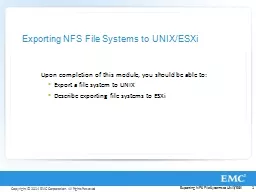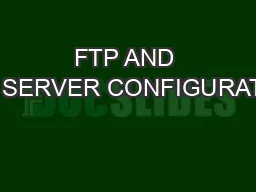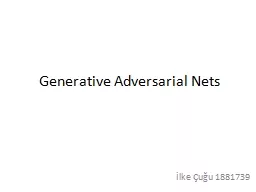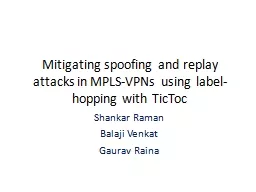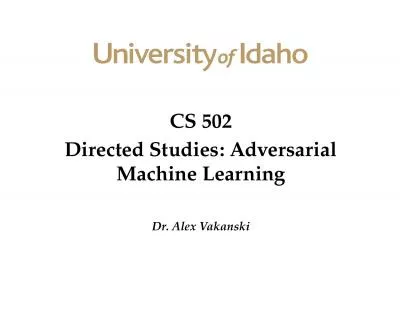PPT-SurgeProtector : Mitigating Temporal Algorithmic Complexity Attacks on NFs Using Adversarial
Author : jade | Published Date : 2024-02-09
Nirav Atre Hugo Sadok Erica Chiang Weina Wang Justine Sherry Network Functions NFs NFs are key components of the Internet infrastructure Firewalls loadbalancers
Presentation Embed Code
Download Presentation
Download Presentation The PPT/PDF document "SurgeProtector : Mitigating Temporal Alg..." is the property of its rightful owner. Permission is granted to download and print the materials on this website for personal, non-commercial use only, and to display it on your personal computer provided you do not modify the materials and that you retain all copyright notices contained in the materials. By downloading content from our website, you accept the terms of this agreement.
SurgeProtector : Mitigating Temporal Algorithmic Complexity Attacks on NFs Using Adversarial: Transcript
Download Rules Of Document
"SurgeProtector : Mitigating Temporal Algorithmic Complexity Attacks on NFs Using Adversarial"The content belongs to its owner. You may download and print it for personal use, without modification, and keep all copyright notices. By downloading, you agree to these terms.
Related Documents

